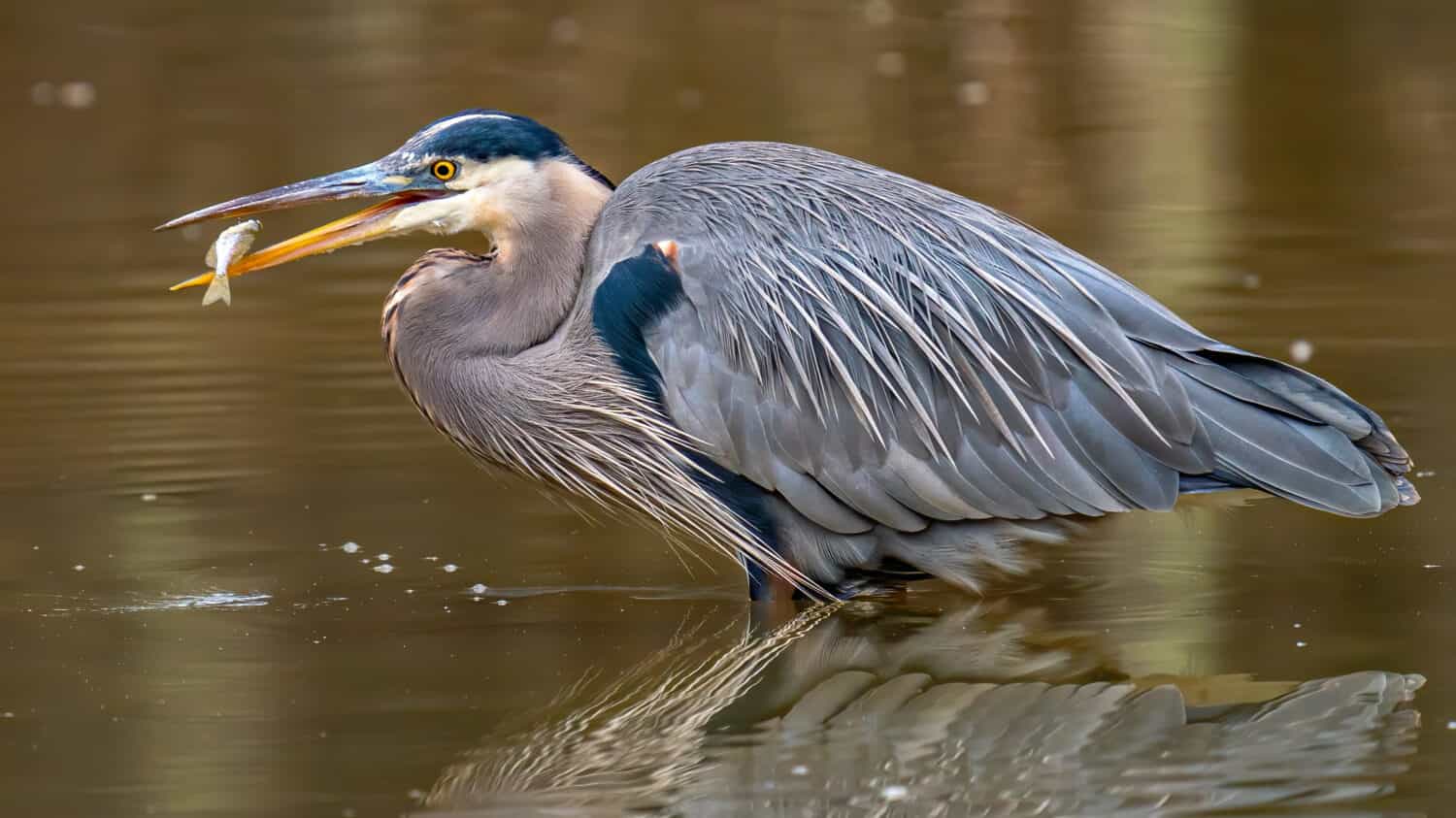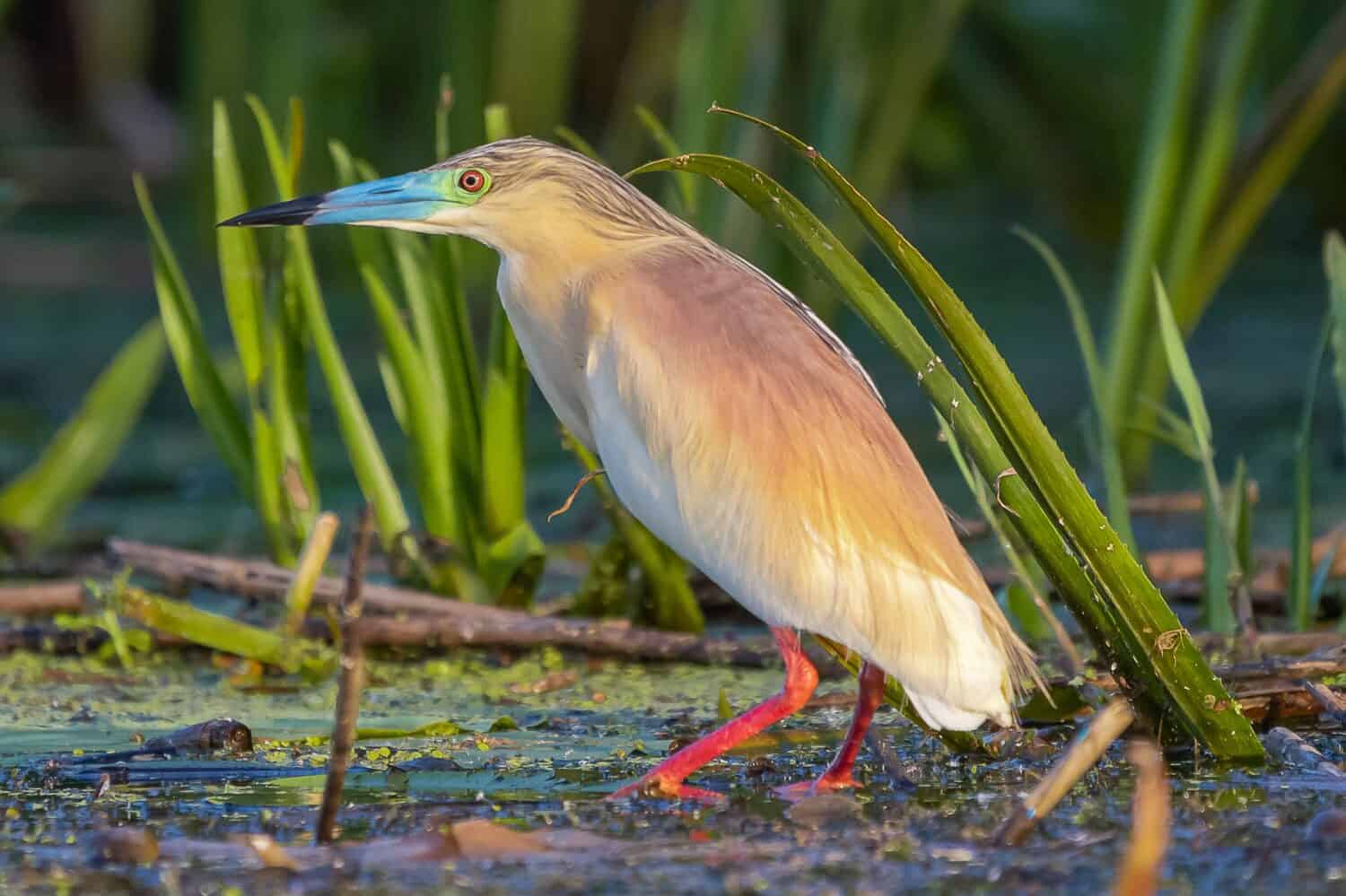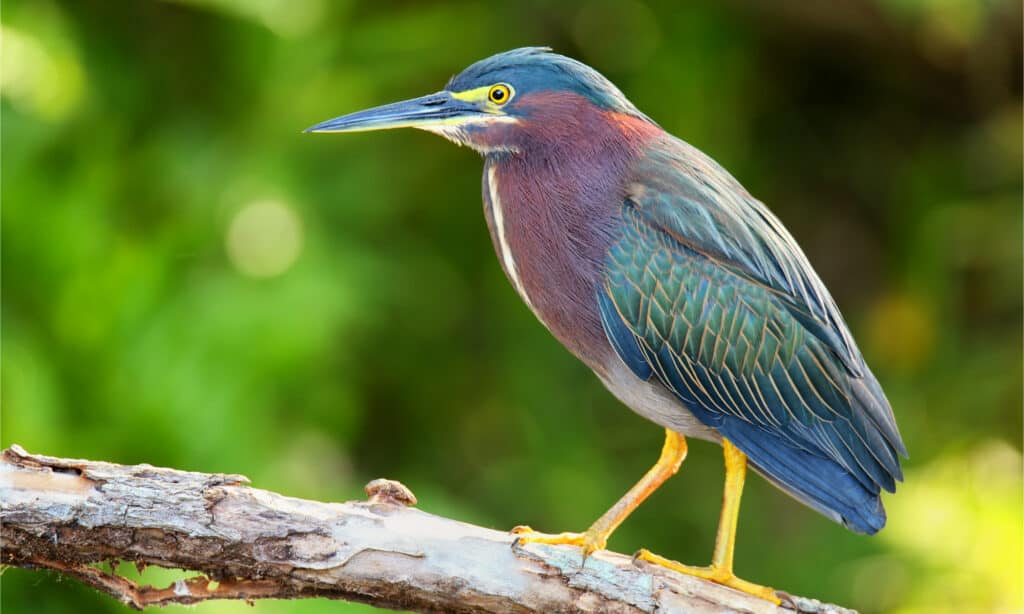
Herons are known for their elegance. They walk with confidence and when they fly, their graceful wingbeats inspire awe. Learn more about the different types of herons that exist and discover the spiritual meaning of heron sightings!
Types of Herons
Great Blue Heron
Scientific name: Ardea herodias
You can find the great blue heron around marshes, where it feeds on fish. It’s a stalking bird that takes its time before snatching up the right catch. These birds nest in trees and are known for their majestic beauty, particularly when they’re in flight. The great blue heron’s plumage has a blue-gray color and walks powerfully and intentionally.
Although their movements may appear slow, when it’s time for them to grab a fish, they move impressively fast. These birds are found throughout the United States. Aside from marshes, you can spot these along the shoreline and even on river banks. Their slow wingbeats are unmistakable and they’re likely to render you motionless while you take in their beauty.

Great blue herons are slow and intentional when fishing.
©Krumpelman Photography/Shutterstock.com
Squacco Heron
Scientific name: Ardeola ralloides
Squacco herons as adults boast a pale green and bluish beak with a black top and a black tip. Their plumage has several colors, including brown, gray, and black. The squacco heron’s coloration is darker when standing at the edge of the water, lazily hunting.
But when this heron is in flight, you can appreciate its white wings and tail from below. When they’re not breeding, these birds have streaked necks but when they are, their necks get buffy. Their legs may be either an orange-yellow color or they can be darker with more of a reddish tone. Their claws are black.

The squacco heron is distinguished by its colorful beak and bright legs.
©Piotr Poznan/Shutterstock.com
Yellow-Crowned Night Heron
Scientific name: Nyctanassa violacea
The yellow-crowned night heron’s habitat is marshes and like other herons, it engages in stalking behavior to feed on aquatic invertebrates. These night herons are stockier than others and have a gorgeous coloration that includes gray and purple. Their faces are black and white, and they have long yellow plumes that extend out from their heads, crowning them gracefully.

The yellow-crowned night heron inhabits the southern tip of Texas year-round.
©iStock.com/neil bowman
Agami Heron
Scientific name: Agamia agami
You can find the agami heron in a variety of environments, including small rivers and streams and coastal mangrove swamps. This is a reclusive bird distinguished by its vibrant colors. In Brazil, it sometimes goes by the name “hummingbird heron” due to its unique coloration. During breeding, their colors intensify, particularly around their faces. The males engage in a courtship dance when attracting females which includes shaking their plumes and rocking back and forth.

Male agami herons engage in a courtship dance when attracting females.
©Uwe Bergwitz/Shutterstock.com
Green Heron
Scientific name: Butorides virescens
The green heron is much stockier than other herons. Its colorations are dark from a distance but as you get closer to appreciate its plumage, you see a velvety green color on their backs along with a chestnut-colored body. These are smaller herons than some of the others included in this list, but they engage in the same stalking behavior around the water’s edge when looking for fish to catch. They employ a bit of sophistication when looking for fish as well, sometimes using tools like twigs or insects as bait.

Green herons are smaller and stockier than other herons.
©Don Mammoser/Shutterstock.com
Spiritual Meaning of Heron Sightings
The heron is a patient bird that recognizes the power of stillness. The heron teaches you the importance of self-reliance and creating balance in your life. When you experience repeated heron sightings, the heron is there to remind you of the contentment that comes with knowing abundance is at your fingertips. They are a sign of good fortune.
Herons point to bountiful fishing opportunities, which means sustenance for all. This is a prosperous animal spirit. For the Cherokee, the heron symbolizes harmony. The heron relishes in its habitat, employing patience day in and day out, striking only when the time is right. The harmonious nature of this bird points to the need for working with what’s around you, making wise choices, and finding contentment in the still, quiet moments of your life.
The heron reminds you that while self-reliance is vital to your well-being, you also need support and companionship. This balance between being too solitary or too social is one you need to work on. By empowering yourself, you can make better decisions about who you let into your inner circle. You maintain your identity instead of getting swayed by the crowd. The heron arrives to help you achieve that balance as you move gracefully through the world.
The photo featured at the top of this post is © Tom Franks/Shutterstock.com
Thank you for reading! Have some feedback for us? Contact the AZ Animals editorial team.







